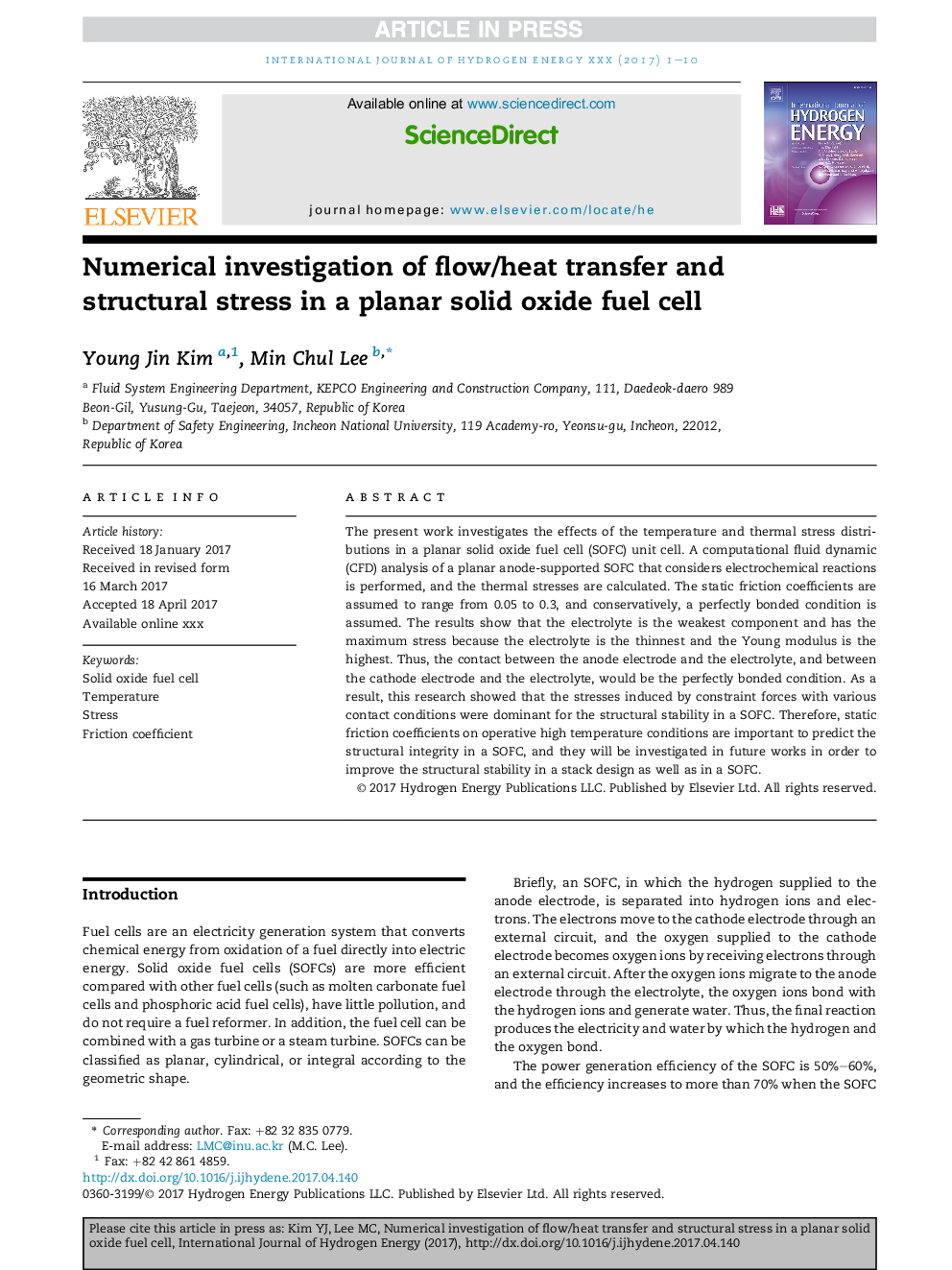| Article ID | Journal | Published Year | Pages | File Type |
|---|---|---|---|---|
| 5146215 | International Journal of Hydrogen Energy | 2017 | 10 Pages |
Abstract
The present work investigates the effects of the temperature and thermal stress distributions in a planar solid oxide fuel cell (SOFC) unit cell. A computational fluid dynamic (CFD) analysis of a planar anode-supported SOFC that considers electrochemical reactions is performed, and the thermal stresses are calculated. The static friction coefficients are assumed to range from 0.05 to 0.3, and conservatively, a perfectly bonded condition is assumed. The results show that the electrolyte is the weakest component and has the maximum stress because the electrolyte is the thinnest and the Young modulus is the highest. Thus, the contact between the anode electrode and the electrolyte, and between the cathode electrode and the electrolyte, would be the perfectly bonded condition. As a result, this research showed that the stresses induced by constraint forces with various contact conditions were dominant for the structural stability in a SOFC. Therefore, static friction coefficients on operative high temperature conditions are important to predict the structural integrity in a SOFC, and they will be investigated in future works in order to improve the structural stability in a stack design as well as in a SOFC.
Related Topics
Physical Sciences and Engineering
Chemistry
Electrochemistry
Authors
Young Jin Kim, Min Chul Lee,
